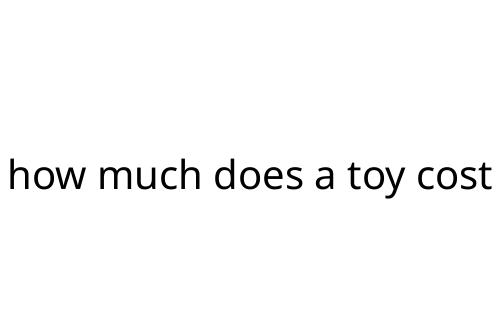how much does a toy cost
If you’re searching for answers to "how much does a toy cost," you’re not alone. The price of a toy can vary wildly, depending on what type of toy it is, where you buy it, and even the time of year. Here’s a realistic look at the costs, whether you’re buying for a birthday, holiday, or just a special treat.
What Factors Influence Toy Prices?
Several factors impact the price of toys:
- Type of Toy: Basic plush animals or simple plastic cars can cost just a few dollars, while high-tech robots or popular licensed characters (think Marvel, Barbie, or Star Wars) might run $30–$100 or more.
- Brand: A well-known brand often means a higher price. Off-brand blocks will cost less than LEGO, for example.
- Material & Construction: Toys made from wood or metal will usually cost more than those made from plastic. Handmade or artisanal toys are also at the higher end.
- Where You Shop: Big box stores and online retailers often have lower prices than boutique shops. Local toy shops may charge more, but they often have unique finds.
- Age Group: Infant and toddler toys with safety features or educational elements are priced to reflect that quality. Collector toys aimed at adults can also be pricey.
Average Cost Breakdown
- Inexpensive Toys ($1–$10): Small figurines, Hot Wheels cars, crayons, simple puzzles, and basic plush toys.
- Mid-Range Toys ($10–$40): Board games, action figures, dolls, basic building sets, remote control cars, and craft kits.
- Premium Toys ($40–$100+): Electronic games, tablets for kids, branded playsets, drones, and large building sets.
- Collector & Specialty Items ($100–$500+): Limited edition action figures, vintage toys, or custom handmade items can cross into “adult hobby” territory.
The average toy most kids want falls in the $15–$40 range. Holiday season or high-demand releases can push prices higher.
Pros and Cons of Expensive vs. Cheap Toys
Expensive Toys
- Pros: Features, durability, brand reputation, safety standards, unique play experience.
- Cons: Higher risk if lost or broken, outgrown faster, may set higher gifting expectations.
Cheaper Toys
- Pros: Budget-friendly, simple fun, good for party favors or spontaneous surprises.
- Cons: Less durable, might not hold attention, may lack safety certifications.
Tips for Shopping Smart
- Set a Budget: Know what you can spend before browsing.
- Watch for Sales: Black Friday, Cyber Monday, and off-season discounts can turn premium toys into affordable buys.
- Read Reviews: Check for real-world durability and fun factor.
- Consider Value, Not Just Price: Sometimes a slightly pricier toy offers years of use, while a cheap impulse buy is quickly forgotten.
- Shop Secondhand: Gently used toys can offer great value, especially for young kids who outgrow interests fast.
The Bottom Line
So, how much does a toy cost? Anywhere from a buck to hundreds, depending on what you’re after. Figuring out what matters most — brand, features, play value, or just sticking to budget — will help you land the best deal for your needs. Aim for balanced choices, and remember: the right toy isn’t always the most expensive one.


